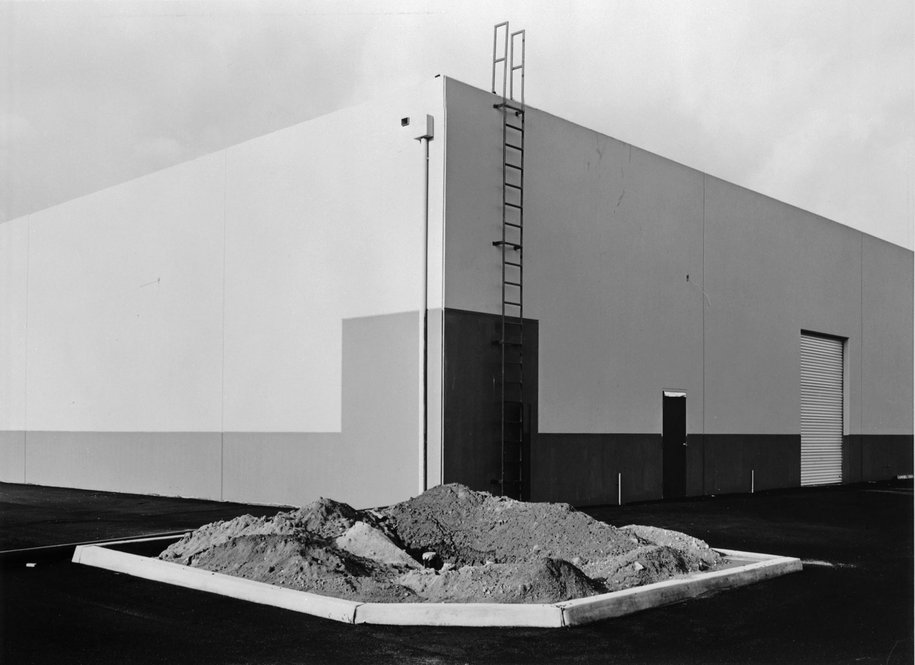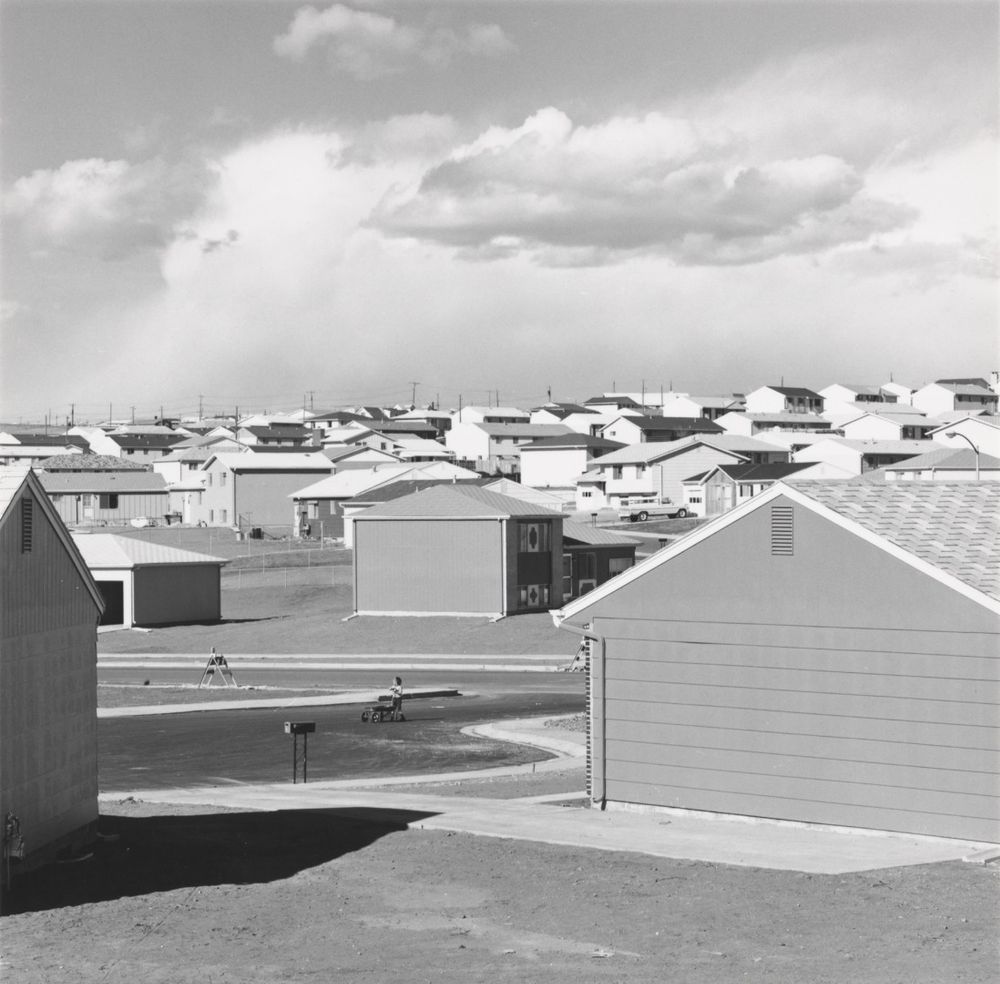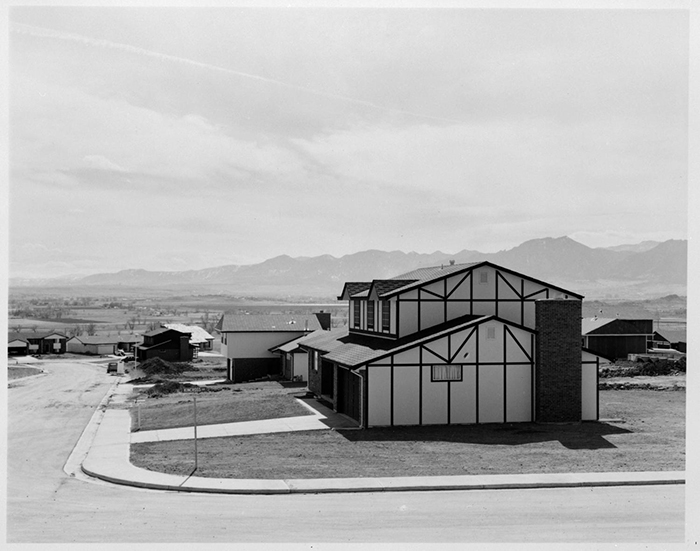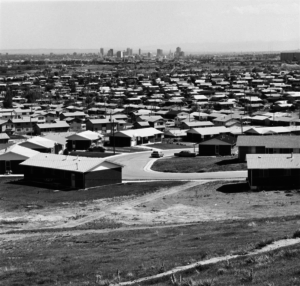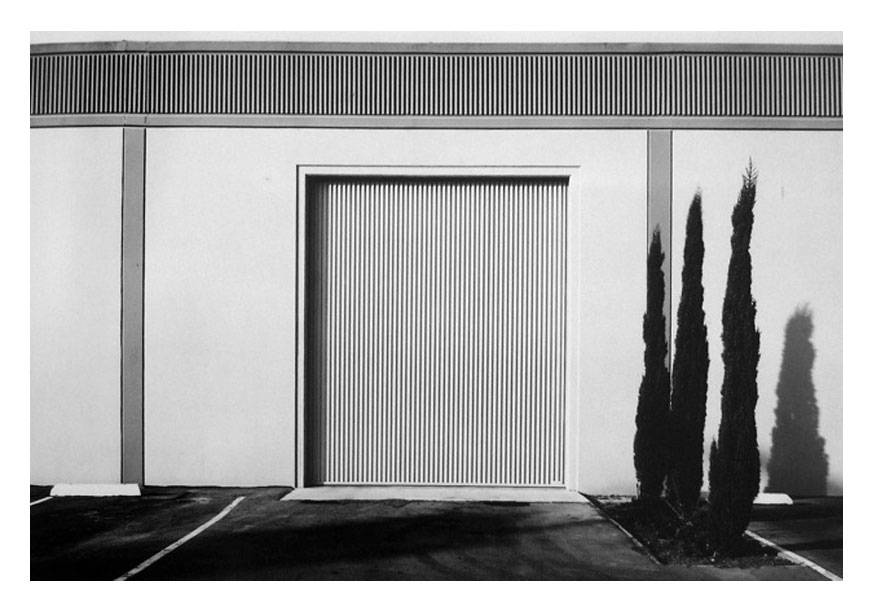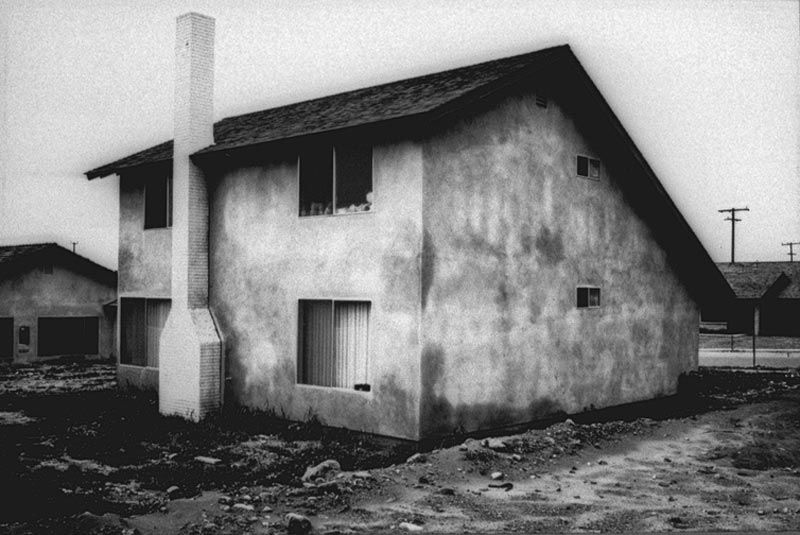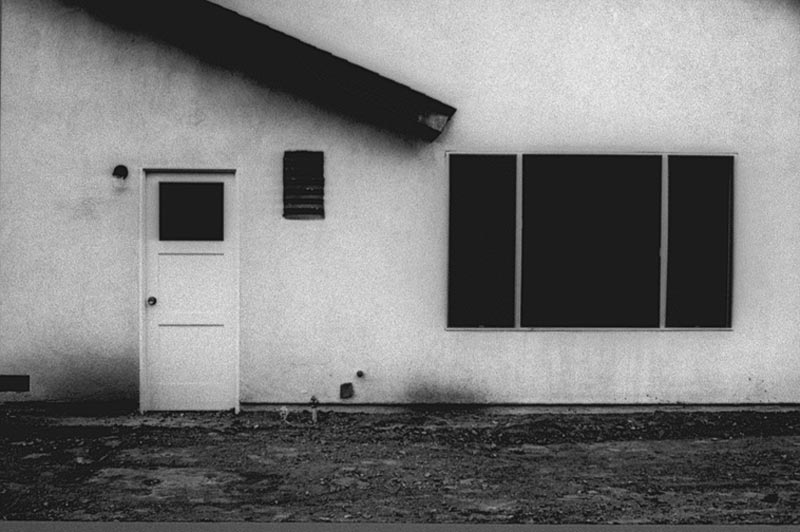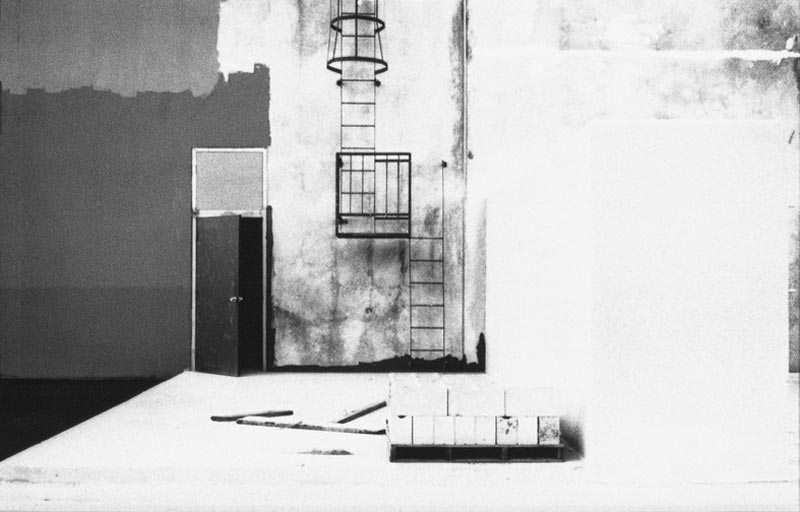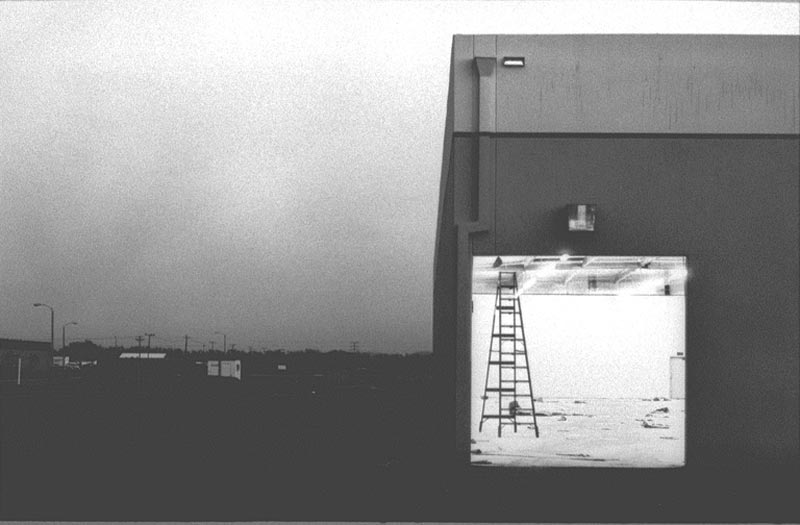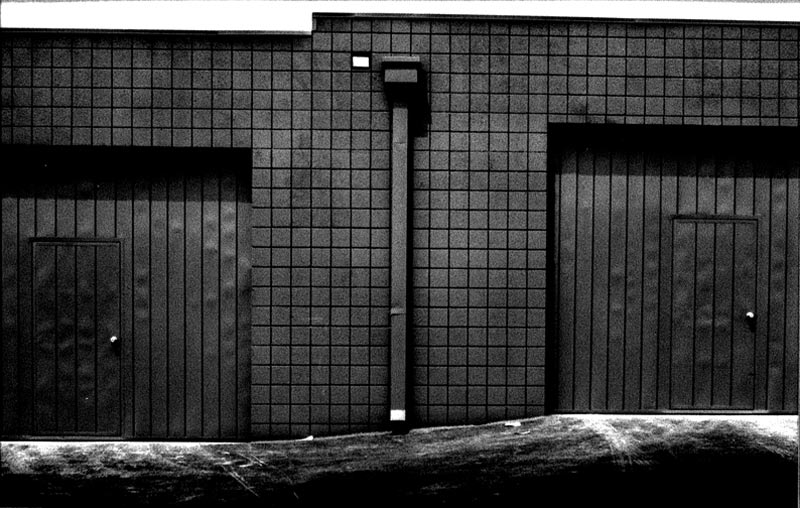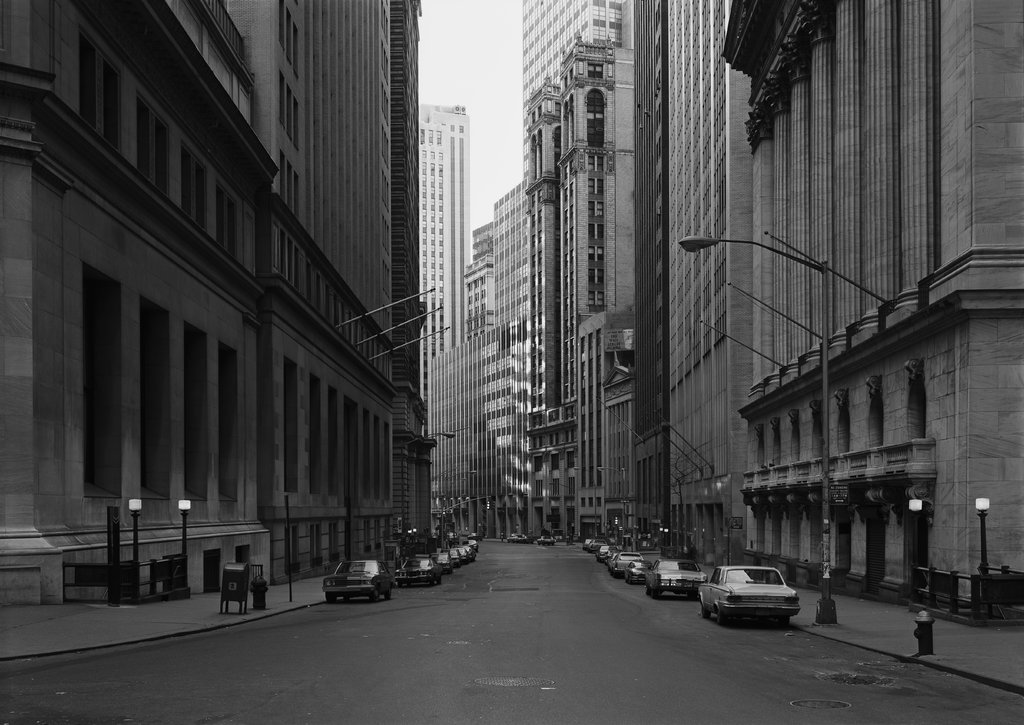New topographics was a term coined by William Jenkins in 1975 to describe a group of American photographers (such as Robert Adams and Lewis Baltz) whose pictures had a similar banal aesthetic, in that they were formal, mostly black and white prints of the urban landscape.
Many of the photographers associated with new topographics including Robert Adams, Lewis Baltz, Nicholas Nixon and Berdand Hiller Becher, were inspired by the man-made, selecting subject matter that was matter-of-fact. Parking lots, suburban housing and warehouses were all depicted with a beautiful stark austerity, almost in the way early photographers documented the natural landscape. An exhibition at the International Museum of Photography in Rochester, New York featuring these photographers also revealed the growing unease about how the natural landscape was being eroded by industrial development.
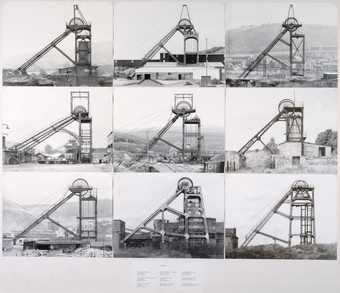
What was the new topographics a reaction to?
Their stark, beautifully printed images of this mundane but oddly fascinating topography was both a reflection of the increasingly suburbanised world around them, and a reaction to the tyranny of idealised landscape photography that elevated the natural and the elemental.
Robert adams:
“I think if you placed me almost anywhere and gave me a camera you could return the next day to find me photographing. It helps me, more than anything I know, to find home.”
-ROBERT ADAMS
He is a photographer who has documented the extent and the limits of our damage to the American West, recording there, in over fifty books of pictures, both reasons to despair and to hope.
Lewis Baltz:
Lewis Baltz produces photographs in series focused on a particular theme or geographic area and usually publishes them in book form, as in The New Industrial Parks Near Irvine, California (1975), Nevada (1978) and Park City (1981). His work, like that of others associated with the New Topographics, challenges the nineteenth century tradition of western landscape photography represented by Timothy O’Sullivan, Carleton Watkins, and William Henry Jackson by presenting a less innocent view of the landscape. Baltz’s perception of the landscape necessarily reveals the effects of twentieth-century culture and suburban development on the nation’s topography.
Nicholas Nixon:
Nixon’s career began in the 1970s when he was a student of photography. Following his first photos of Alburquerque, he shot his first major series, City views. These photographs, taken in Boston and New York, formed part of one of the most influential exhibitions in the history of photography, organized in 1975 by George Eastman House entitled New Topographics: Photographs of a Man-Altered Landscape. This is one of the main themes dealt with by Nixon throughout the whole of his career. From the very start he has worked on series that touch on fundamental aspects of human life.
This image interests me the most:
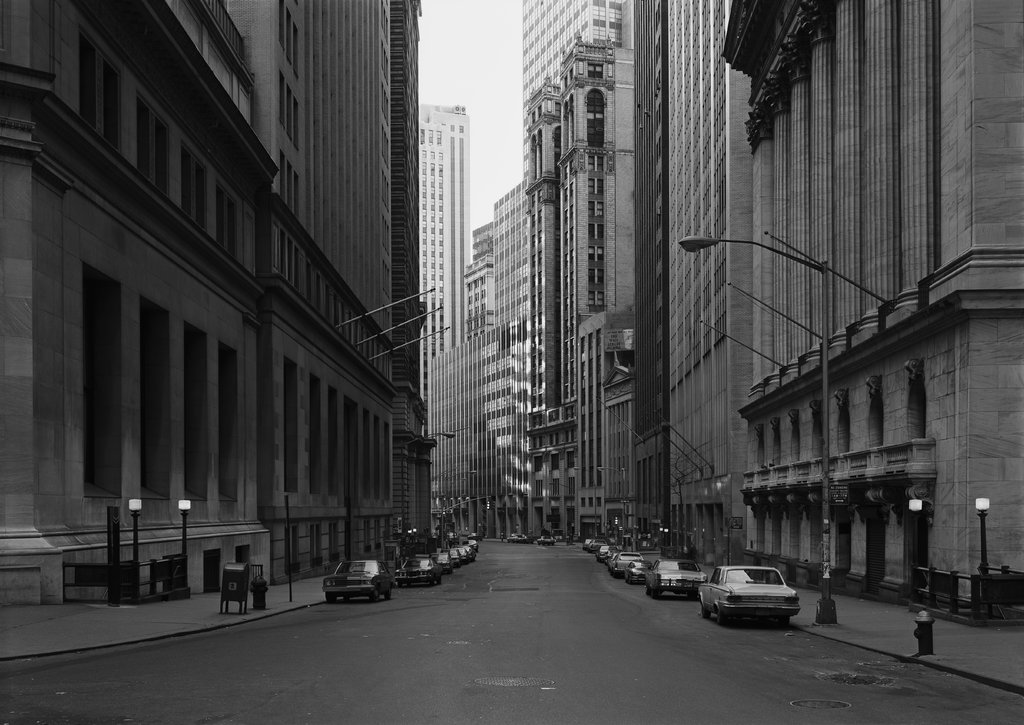
The low angle to give a realistic perspective and view of the ‘man made’ world we are living in. With the buildings towering over and almost enclosing us, its intimidating.
Bernd and Hiller Becher:


